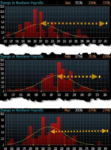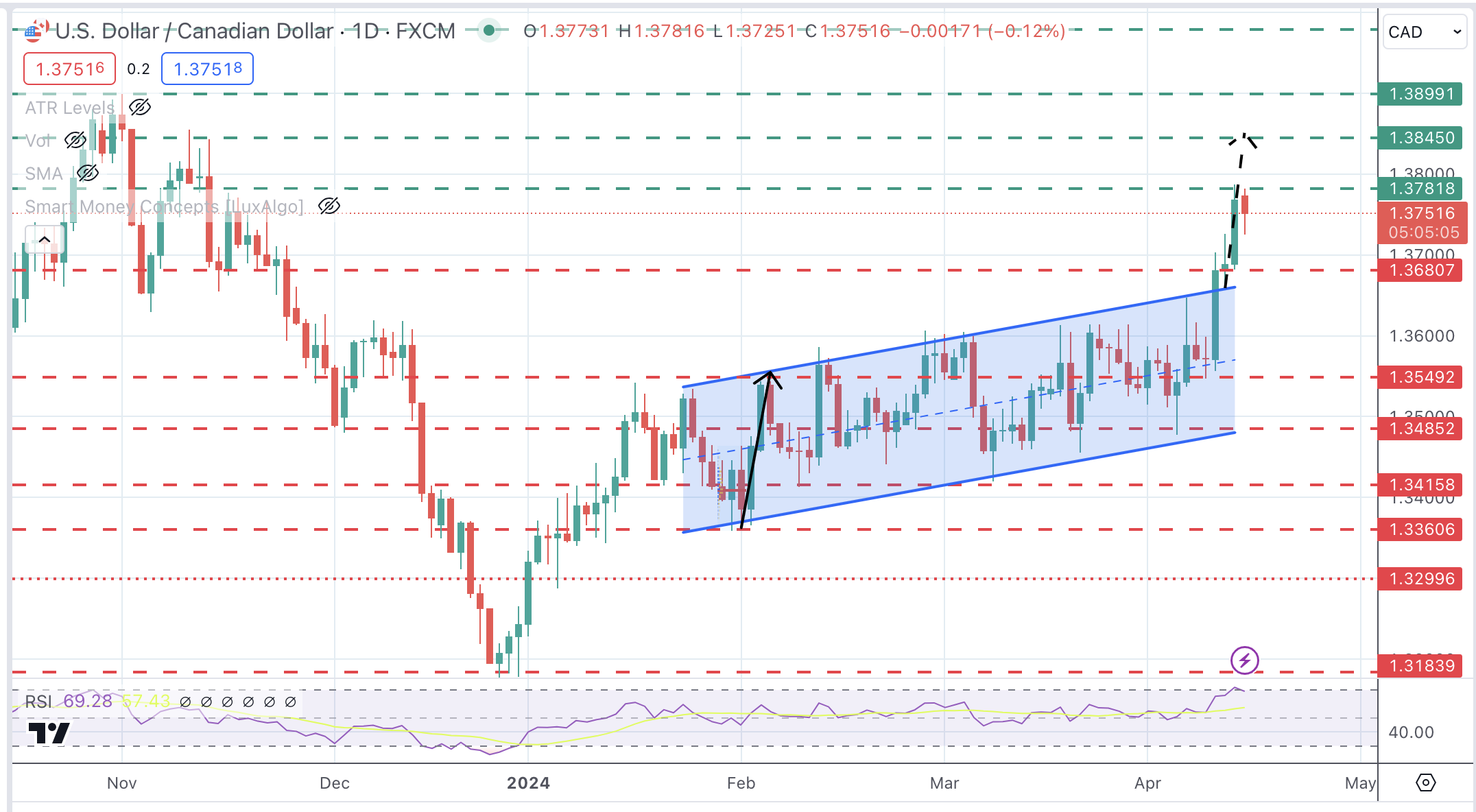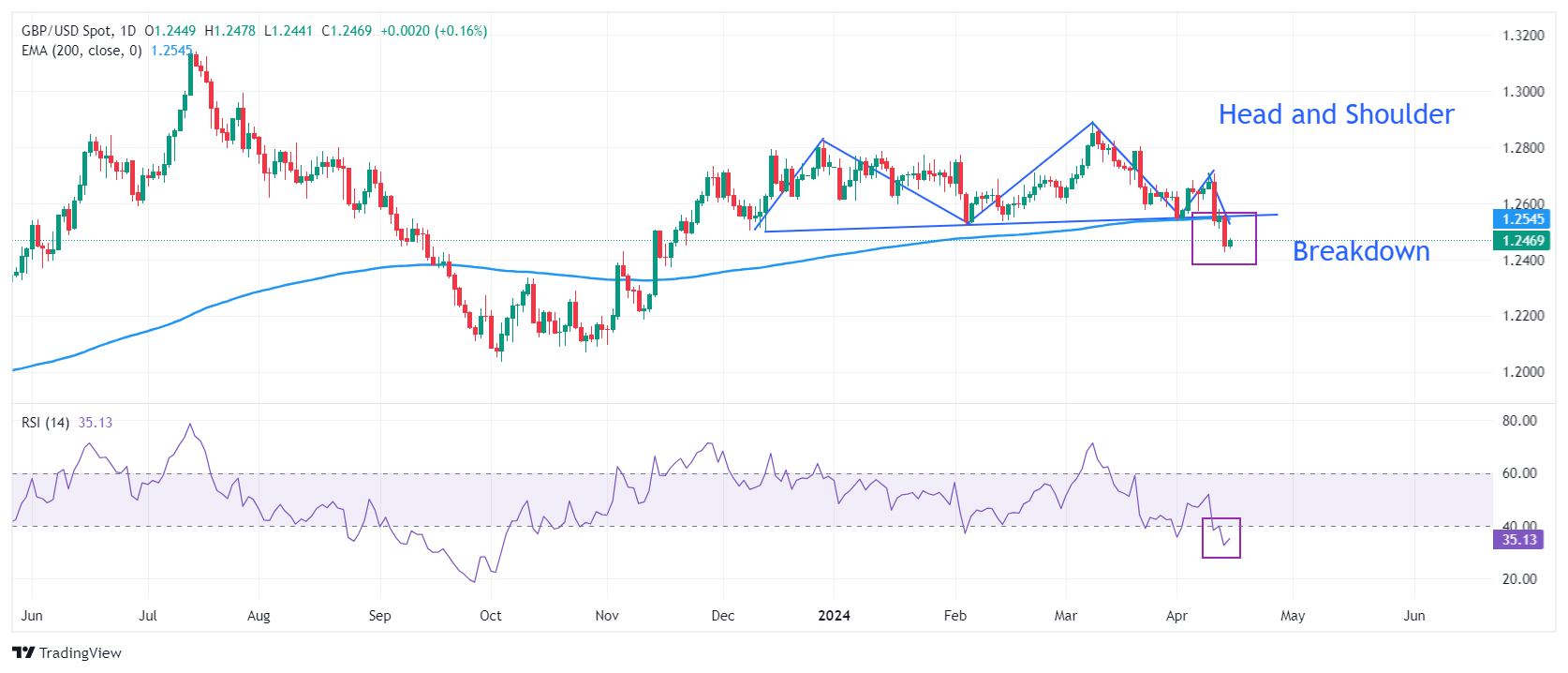Strong US consumption and production figures kept the greenback well supported last week on the heels of the jump in CPI to 6.2%. Meanwhile, the surge of Covid cases in Europe underscores the divergences with the US, sending the euro to new lows for the year.
At the same time, oil prices headed south for the fourth consecutive week, matching the longest decline in more than two years. It did not favor the Norwegian krone, the weakest of the majors, with a 2.15% drop. It brought this year's loss to almost 3.5%, despite it being the first G10 central bank to hike rate, with another likely next month.
The prospects of a Bank of England rate hike next month were lifted by the strong inflation and retail sales figures. Sterling was the best performing major currency, rising a little more than 0.25% against the dollar. It also traded at its best level against the euro since March 2020. At the end of the week, the euro also broke down against the Swiss franc, trading below CHF1.05 for the first time since July 2015.
Japan's October CPI showed that excluding fresh food and energy, the world's third-largest economy has still not broken free of deflation's grip (-0.7% year-over-year). A weaker yen is not a problem for Japanese policymakers or corporates. Japan has averaged a monthly trade surplus this year through October of about JPY7.8 bln a month, hardly the stuff that should excite protectionists. The BIS estimates that eurozone inflation would be closer to 1.5% than the 4.1% reported in October without the supply chain disruptions. The weakness of the euro does not appear problematic for the ECB either. With the Fed already slowing the pace of its monetary accommodation, a stronger dollar reinforces the policy thrust. Even though net exports shaved Q3 growth by about 1.1 percentage points, it has yet to spur criticism, and September was a record shortfall.
Dollar Index: The Dollar Index rose for the fourth consecutive week. It met the (50%) retracement objective of its slide from March 2020 (~103.00) to the January 6 low (~89.20), which is found near 96.10. DXY stalled ahead of the weekend, just shy of the high set in the middle of the week near 96.25. A move above there targets the next retracement (61.8%), which is close to 97.75. The MACD is over-extended but still headed higher, while the Slow Stochastic appears to be turning lower. Support is seen around 95.50. The market seems to have discounted much of the good news for the dollar and Fed policy. We note that the US 2-year yield fell almost six basis points last week. That leaves it off about 4.5 bp this month, despite the strong CPI reading, robust retail sales, and industrial output figures.
Euro: The divergence of monetary policy has been the critical weight on the euro, but at the end of last week, it seemed that surge in Covid cases in Europe helped drive the single currency to new lows. It fell to $1.1250 ahead of the weekend to take out the mid-week low near $1.1265. The weekly loss of about 1.3% is the biggest in five months. Recall that the $1.1290 area represented the (61.8%) retracement of the rally that began in March 2020. The momentum indicators are stretched, but a possible bullish divergence is appearing in the Slow Stochastic. A cap seems to be forming around $1.1375. After repeated tests, and much to the chagrin of the Swiss National Bank, the euro was sold through CHF1.05 ahead of the weekend for the first time since July 2015. Given its modus operandi, the SNB is likely resisting. There is little on the charts ahead of CHF1.0250. In the second half of last week, the euro found support near GBP0.8385, its lowest level since March 2020. Support is seen close to GBP0.8275-GBP0.8300. Lastly, the euro found support near JPY128.00, which has more or less withstood several tests since moving above there in February.
Japanese Yen: The greenback recorded a new four-year high against the yen, less than a handful of pipis from JPY115 in the middle of last week. It reversed lower and settled ever so slightly below the previous session's low to leave a key reversal in its wake. Ir recorded the week's low ahead of the weekend near JPY113.60. Since the dollar pushed above JPY112 early last month, we have suggested a JPY113-JPY115 trading range. It did trade to about JPY112.75 on November 10 and 11 but snapped back into the range. The US 10-year note futures (December contract) posted a key reversal in the middle of last week, too, and also ended the week at eight-session highs, which, of course, means lower yields. The dollar-yen exchange rate still seems to be a range-bound creature, more the most part, and heavily influenced by external factors, like US 10-year yield and broader risk appetites.
British Pound: Sterling outperformed the other major currencies last week, but the 0.3% gain is nothing to write home about. It remained within the previous week's range. It was unable to sustain the upside momentum after approaching the (50%) retracement objective of the decline since the month's high and outside down day on November 4 (BOE meeting). That retracement stands at $1.3525. The strong CPI report on November 17 helped lift sterling to the week's high near $1.3515. However, the underlying strength of the dollar proved too much, and ahead of the weekend, sterling traded a little below $1.3410. The momentum indicators have turned higher, and as long as $1.3400 holds, sterling looks attractive. However, the market appears to have a 15 bp hike at next month's meeting fully discounted. While it remains a distinct possibility, if not a likelihood, but 100% confidence may leave sterling vulnerable to a reassessment.
Canadian Dollar: The US dollar rose for the fourth consecutive week against the Canadian dollar, matching the longest advance since early last year. With the pre-weekend gain, the greenback met the (61.8%) retracement objective of decline since CAD1.29 was approached on September 20, found near CAD1.2665. The US dollar's broad strength, coupled with the stock market wobble (a proxy for risk), and the drop in crude prices by around 4.25%, the fourth consecutive weekly decline shaved about 0.75% off the Canadian dollar. The implied yield of the June 2022 Banker Acceptances fell last week and is now about 10 bp lower than at the end of last month. The MACD is headed up though over-extended, while the Slow Stochastic has flatlined at extreme levels and has not yet confirmed the new highs. The US dollar continues to hug the upper Bollinger Band, which will begin the new week near CAD1.2650.
Australian Dollar: The Aussie fell for the third straight week, and ahead of the weekend, approached $0.7225, last seen in early October. As seen with some of the other currency pairs, the MACD is still warning of currency weakness, while the Slow Stochastic is flatlining but over-extended. The trendline connecting the August and September lows initially held last week. It (~$0.7240) yielded ahead of the weekend, but the Aussie managed to close back above it. It needs to resurface above $0.7300 to be anything meaningful. Softer than expected, wage growth may have reinforced the RBA's message to the markets, and the yield of the June 2022 T-bill futures fell seven basis points last week and is now down 31 bp on the month.
Mexican Peso: Emerging markets currencies remain out of favor in a strong dollar environment. The JP Morgan Emerging Market Currency Index slumped by more than 2% last week, the most since June. The Turkish lira collapsed by nearly 11%. The Indian rupee rose by 0.3%, the strongest in the EM space. The greenback made a new marginal high in two-and-a-half weeks before the weekend, slightly below MXN20.89. The momentum indicators are constructive for the dollar, but it is at the upper end of its recent range (~MXN20.12-MXN21.00). The high for the year was set in March near MXN21.64, and it will come into view when the greenback rises above MXN21.15.
Chinese Yuan: By shadowing the dollar so tightly, the yuan is dragged higher on a trade-weighted basis in the stronger greenback environment. The yuan is at six-year highs on the basket the PBOC tracks (CFETS). The PBOC reportedly stressed the importance of exchange risk management ahead of the weekend, and it may be a warning that its willingness to tolerate a stronger yuan is limited. The yuan slipped an inconsequential 0.12% against the dollar last week. For nearly the past five weeks, the exchange rate has been mostly confined to a CNY6.38-CNY6.40 range. It is a fuzzy range and allows for around a big figure in both directions. The index of Chinese companies listed in the US (NASDAQ Golden Dragon Index) fell about 5.7% last week. The major benchmarks in China, including the CSI 300, posted small gains. The Hang Seng fell 1.1% last week, and most of that was before the weekend on disappointing earnings from Alibaba (-10.3% in HK).
Full story here Are you the author? Previous post See more for Next post
Tags: #USD,Featured,newsletter






















